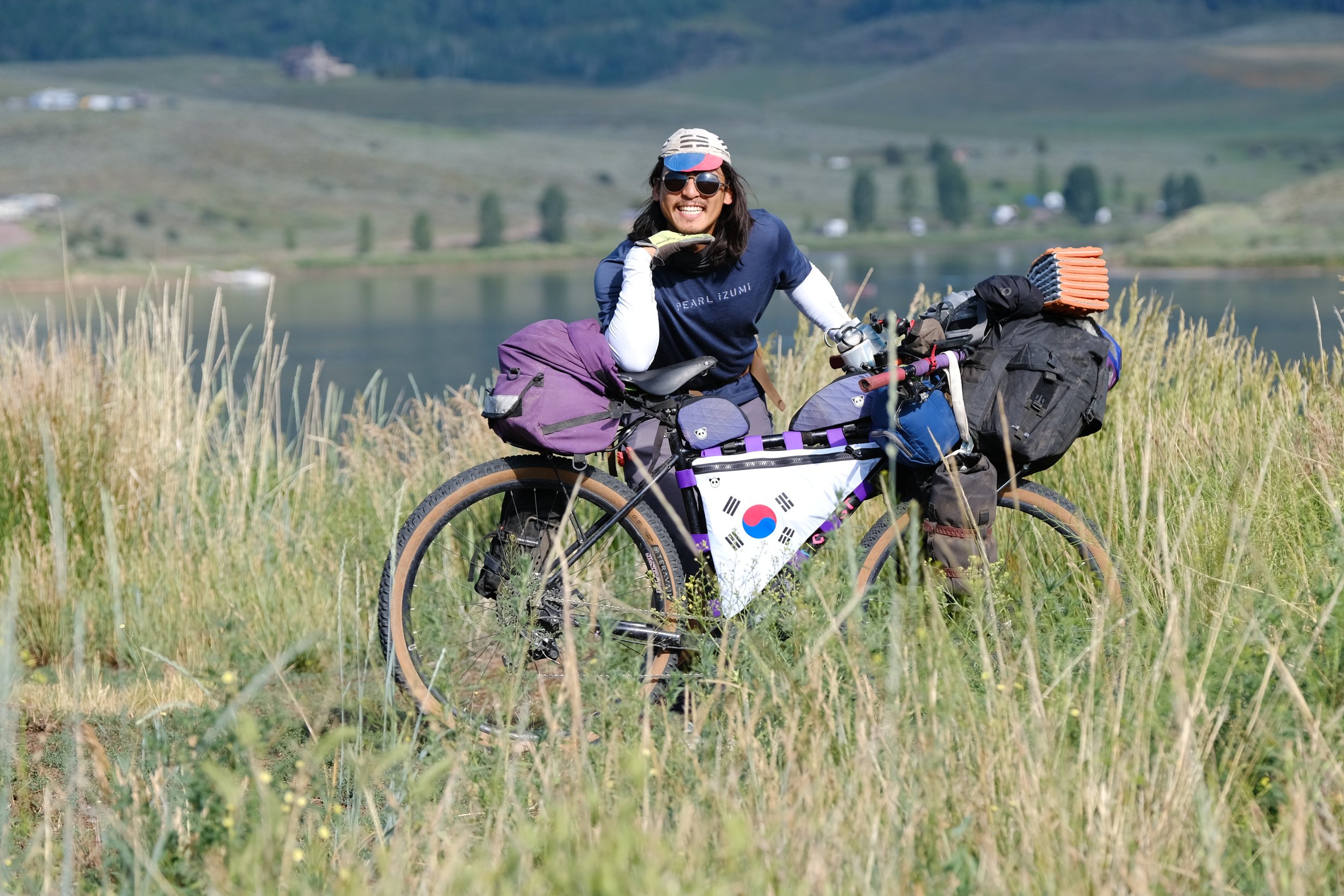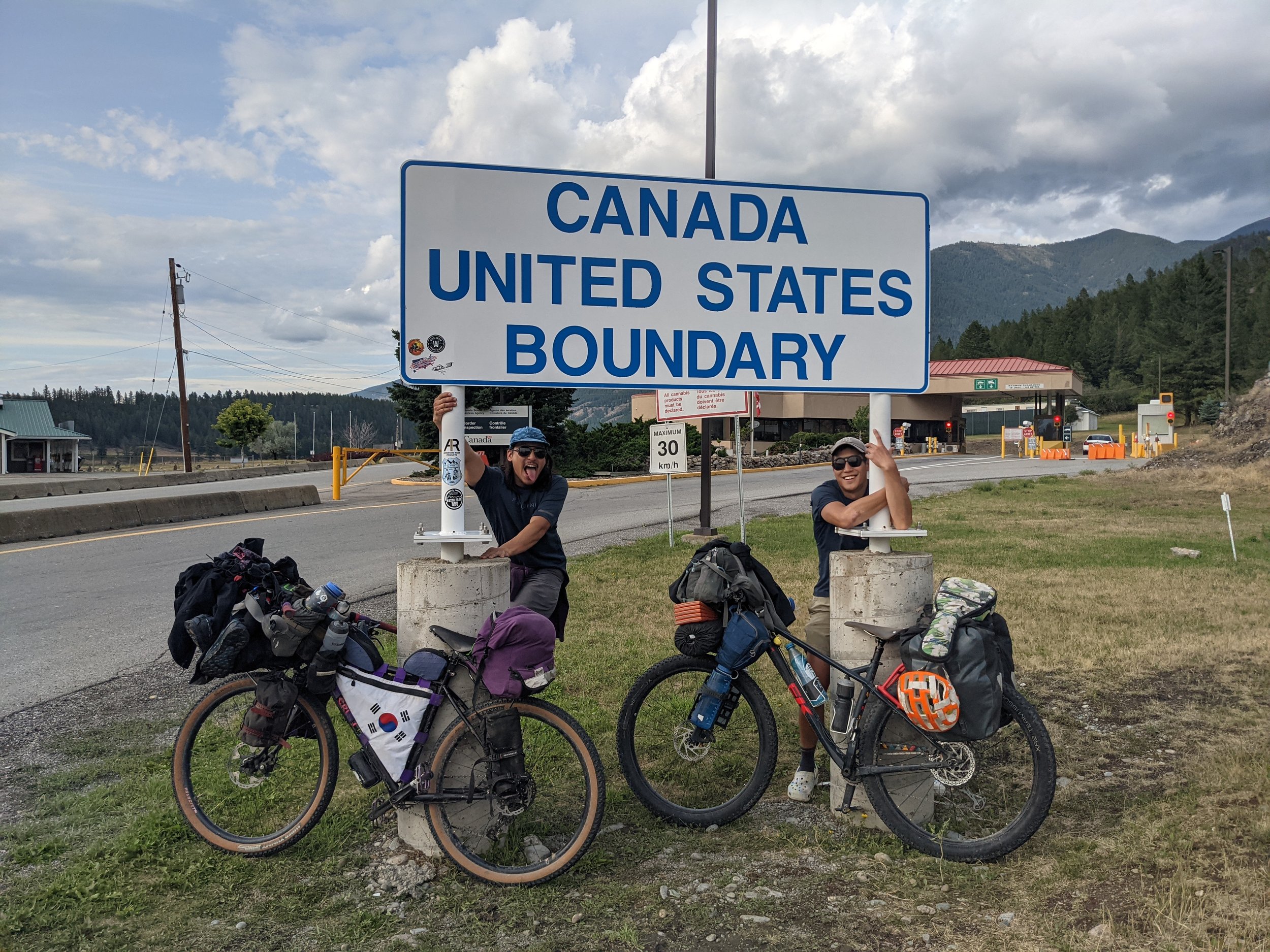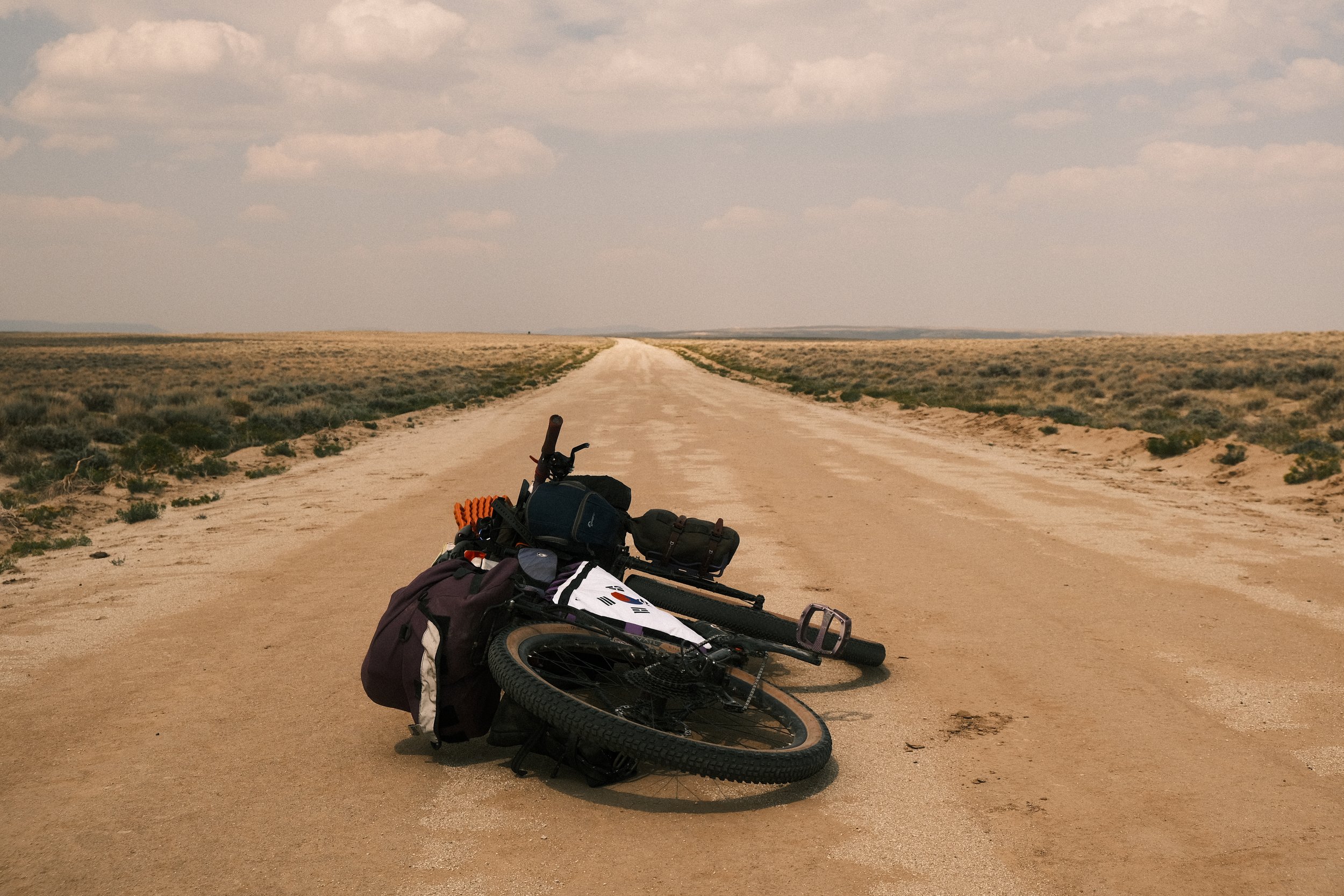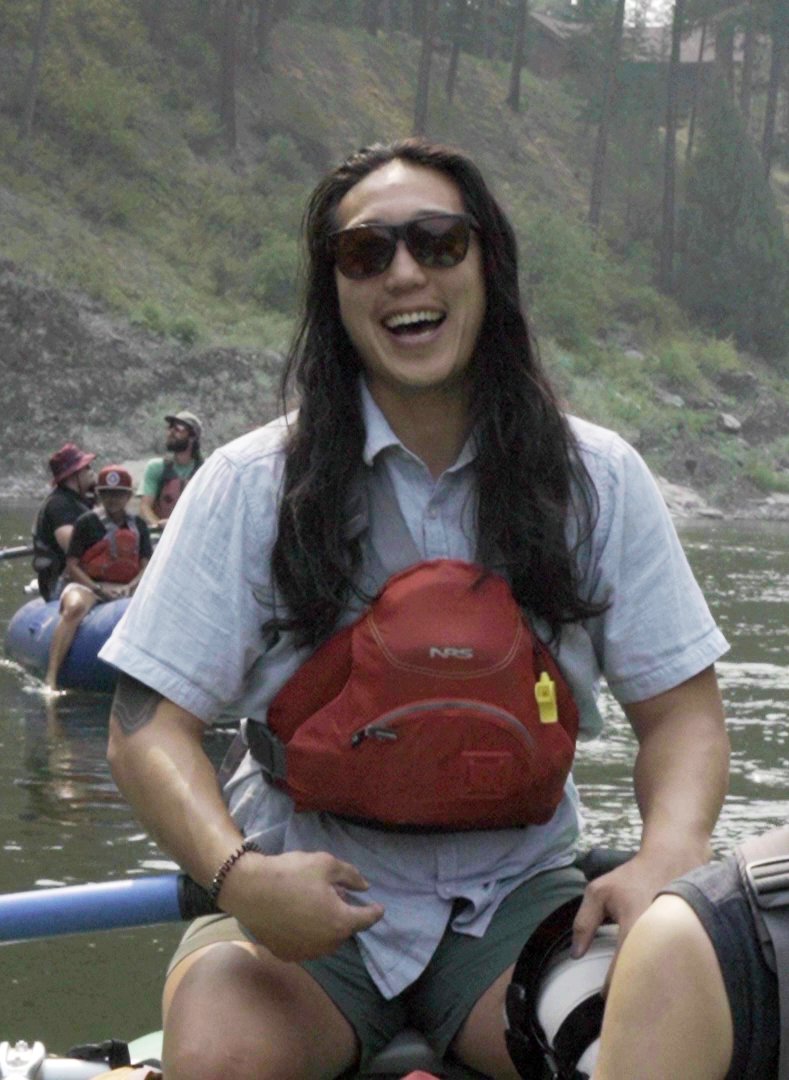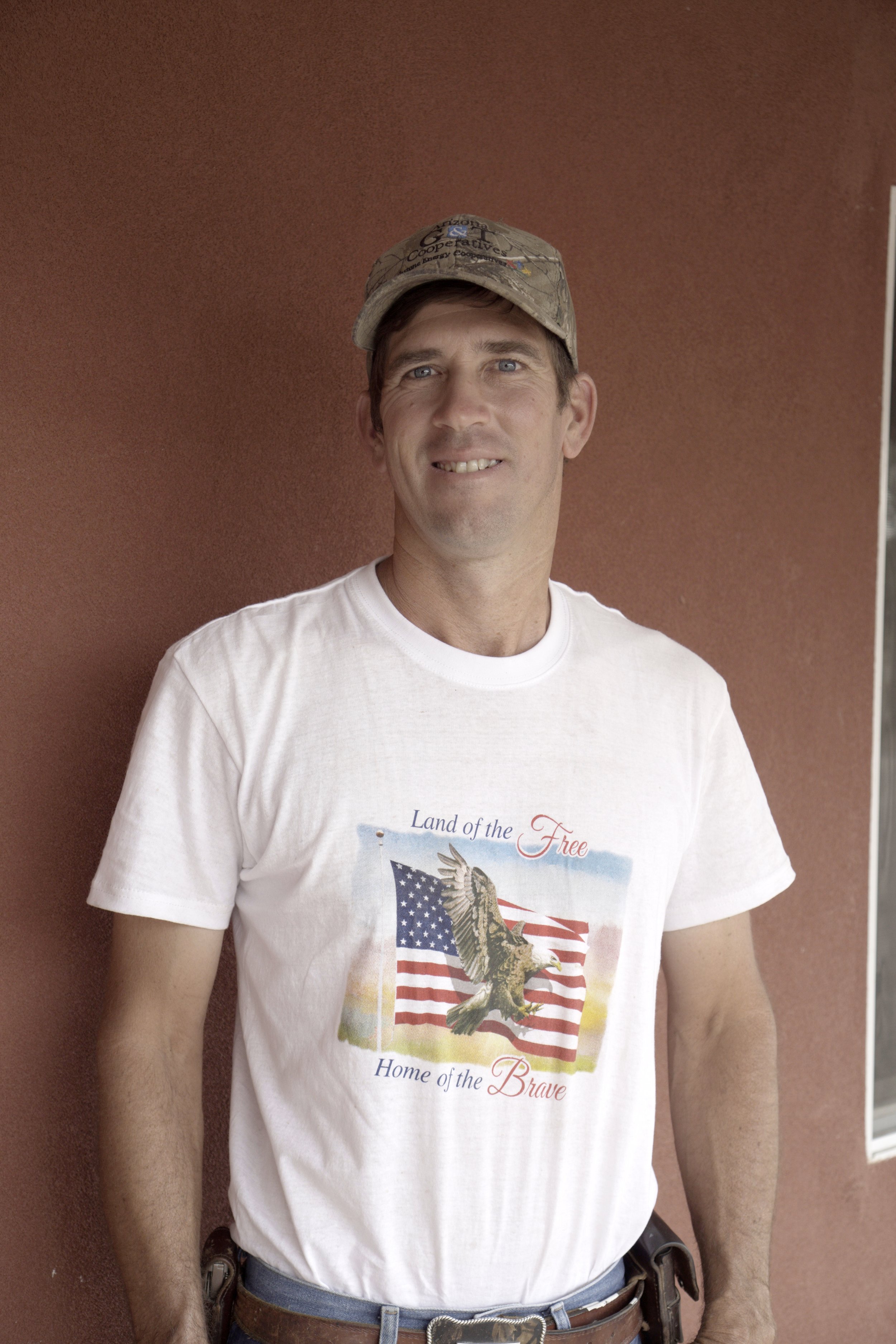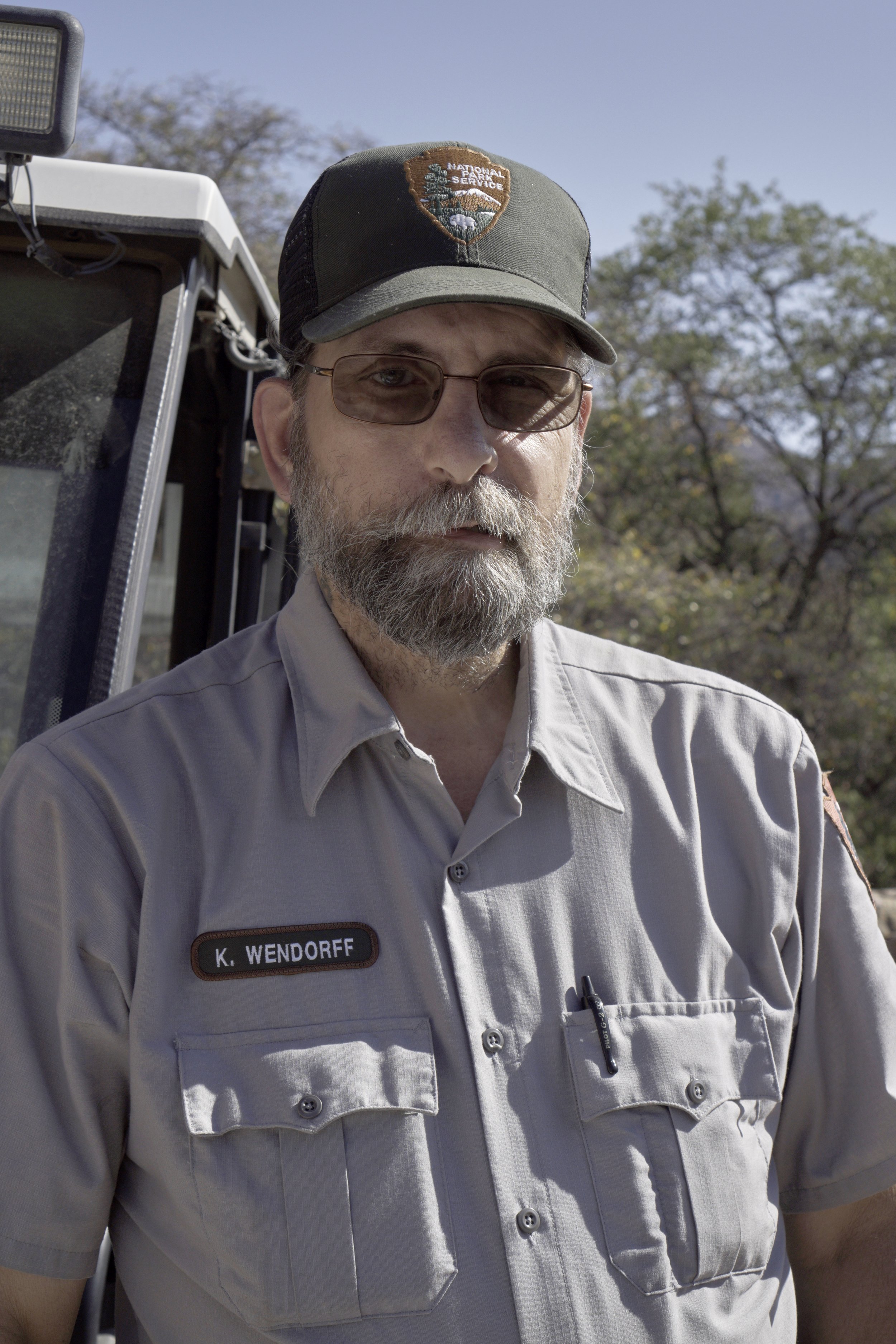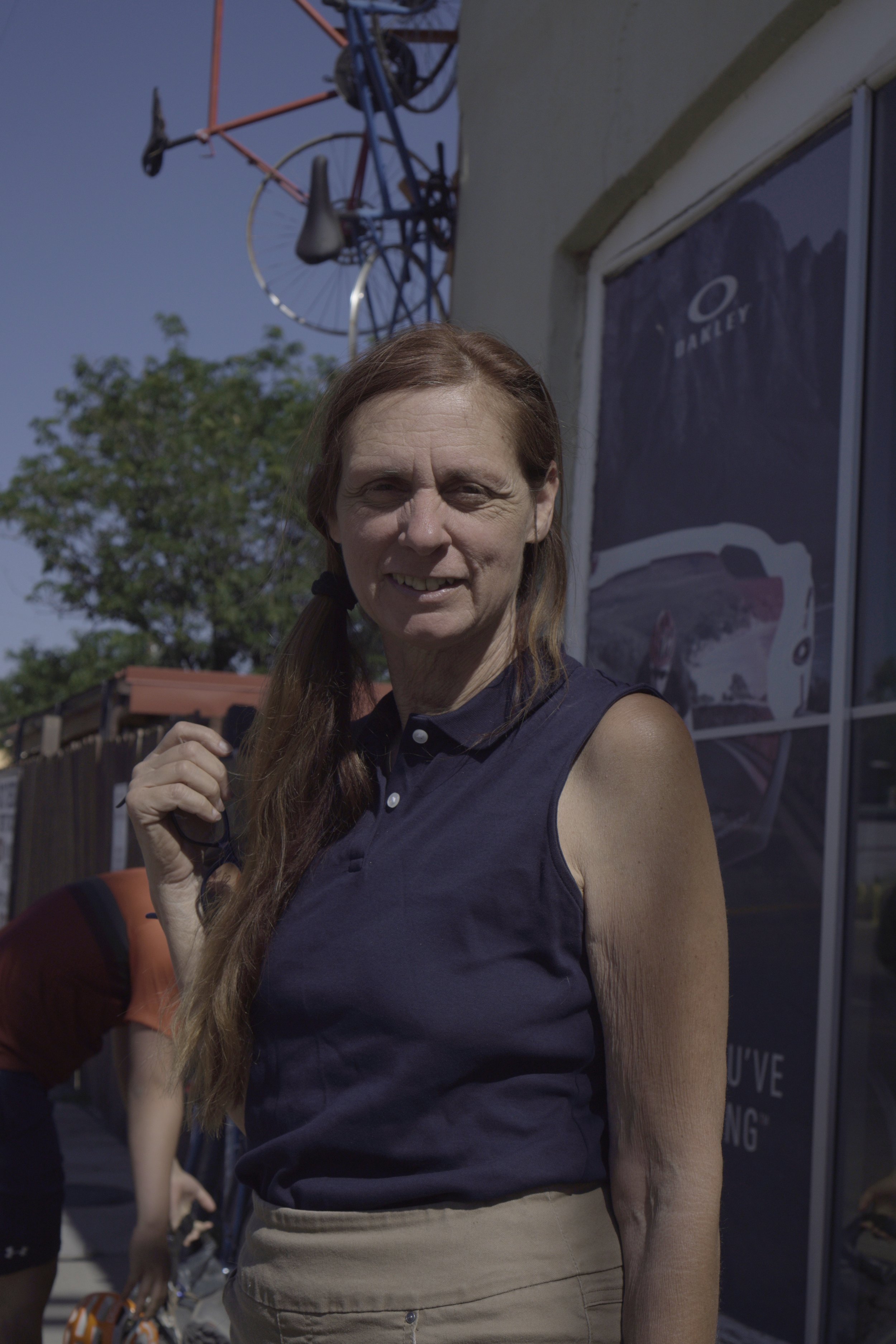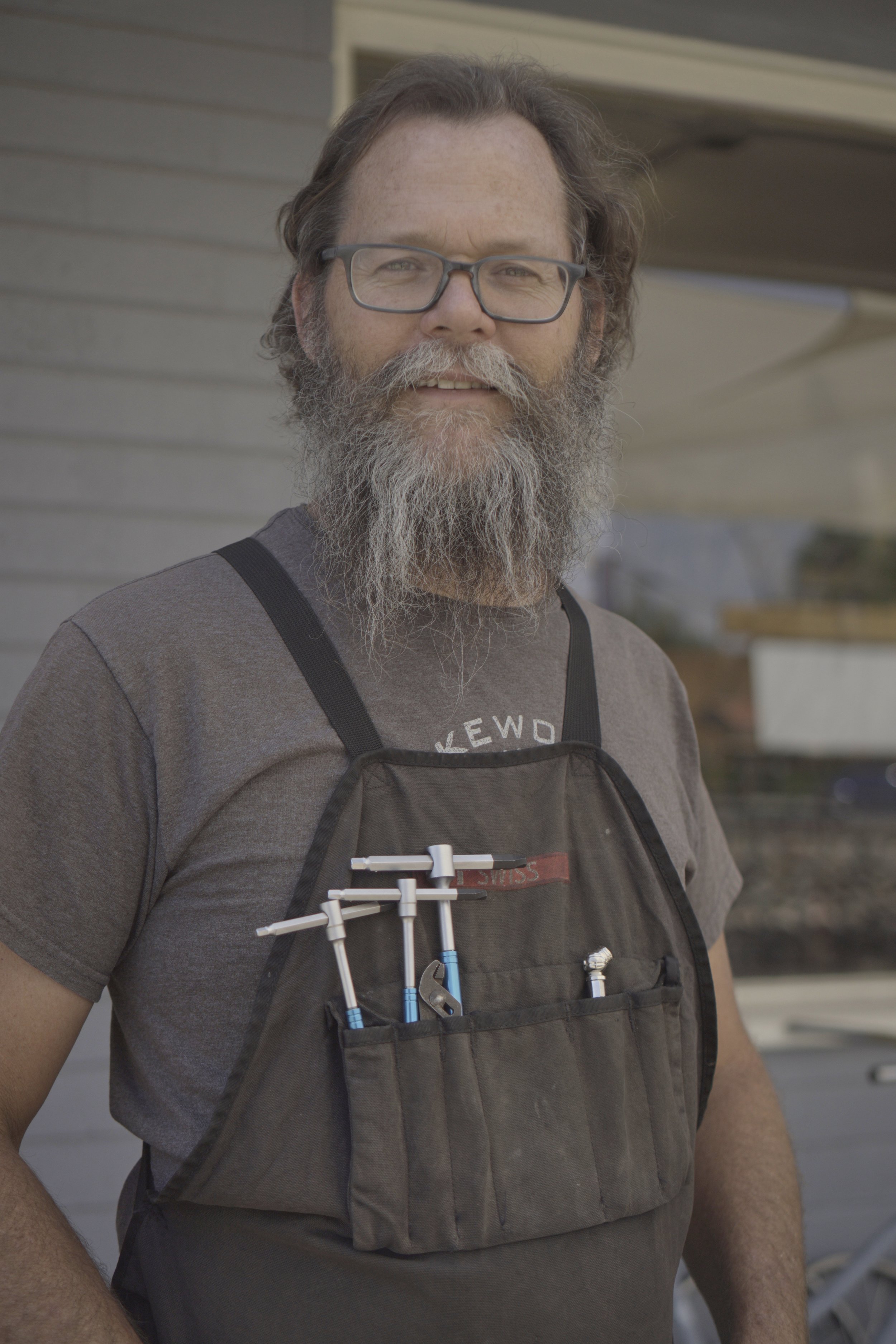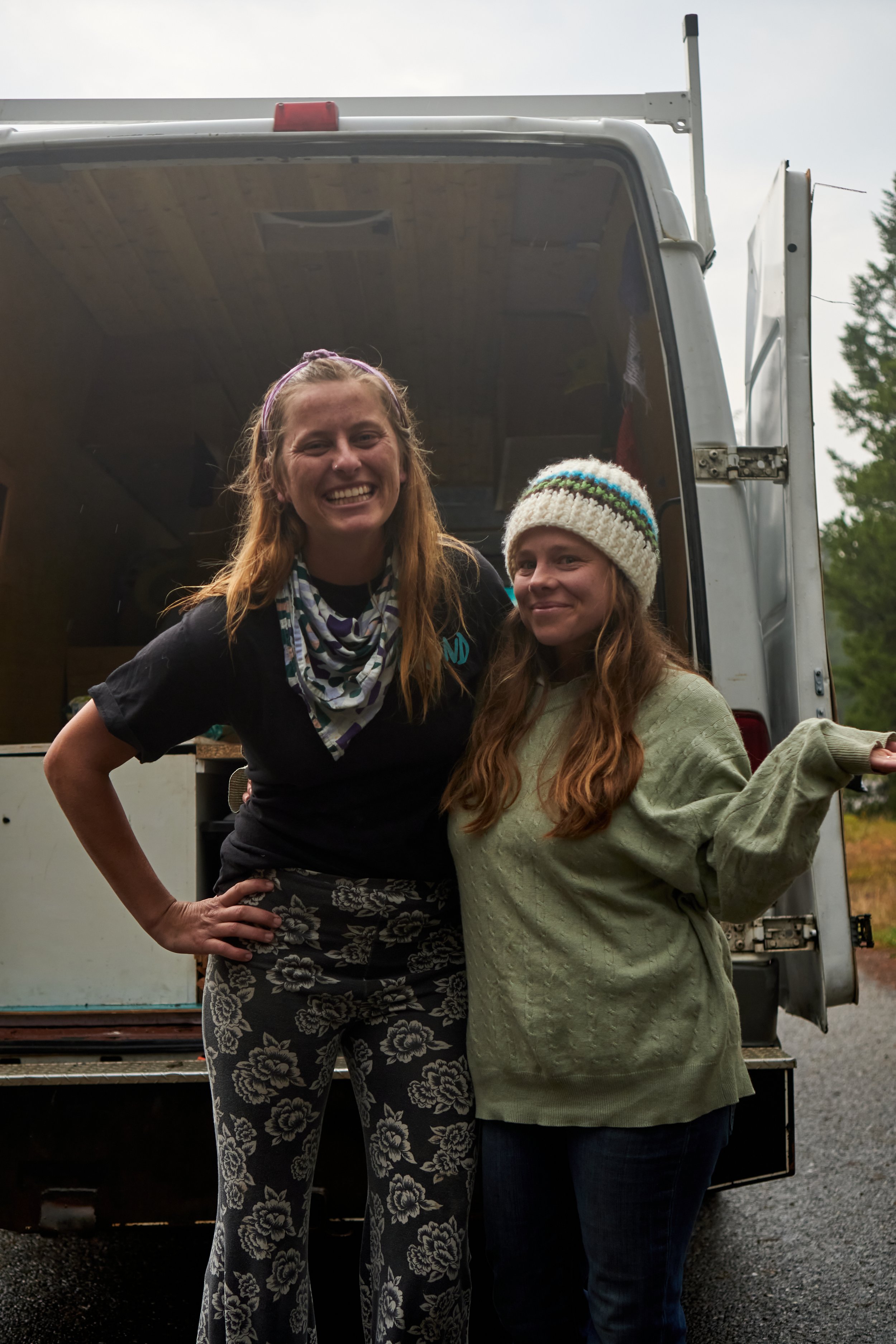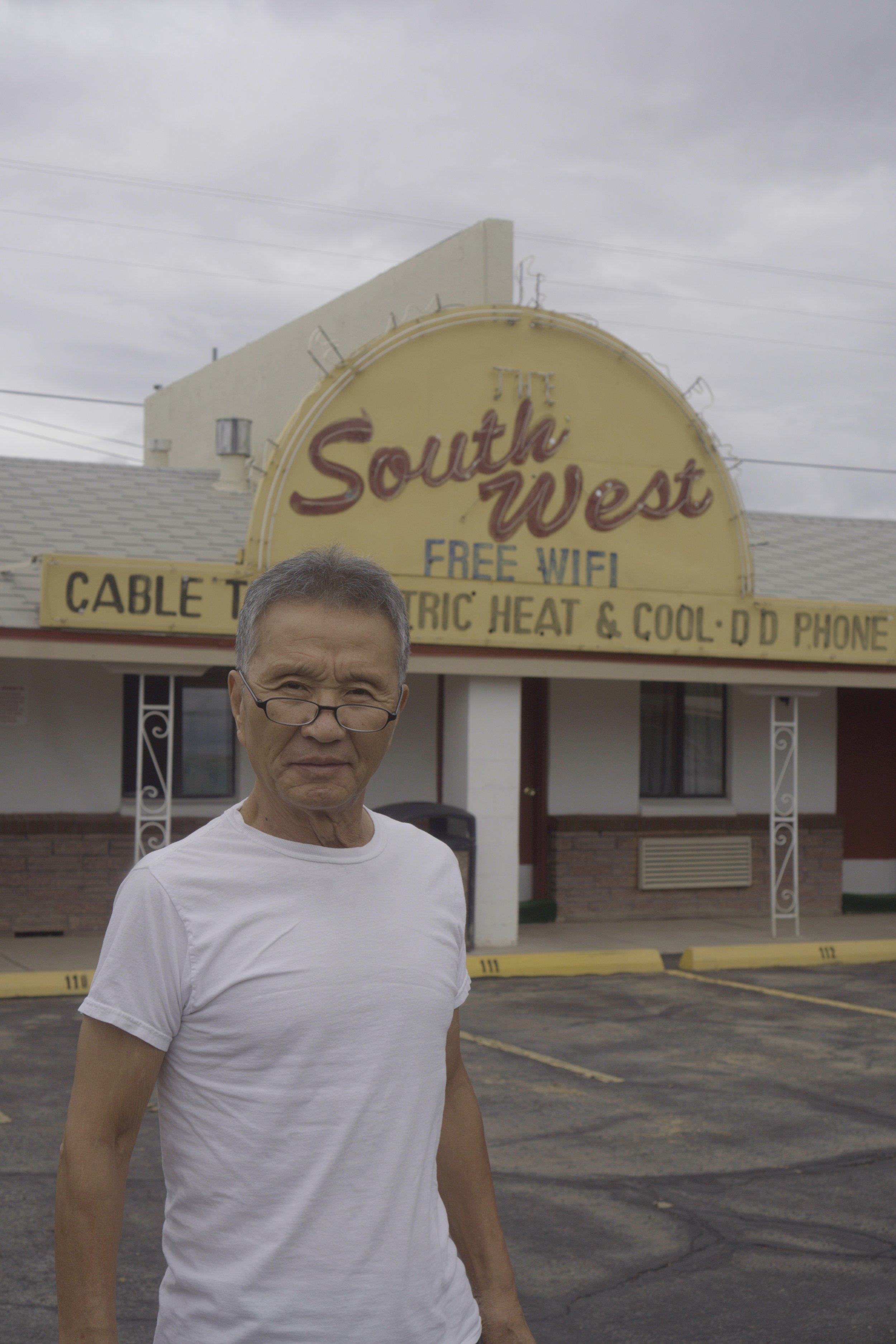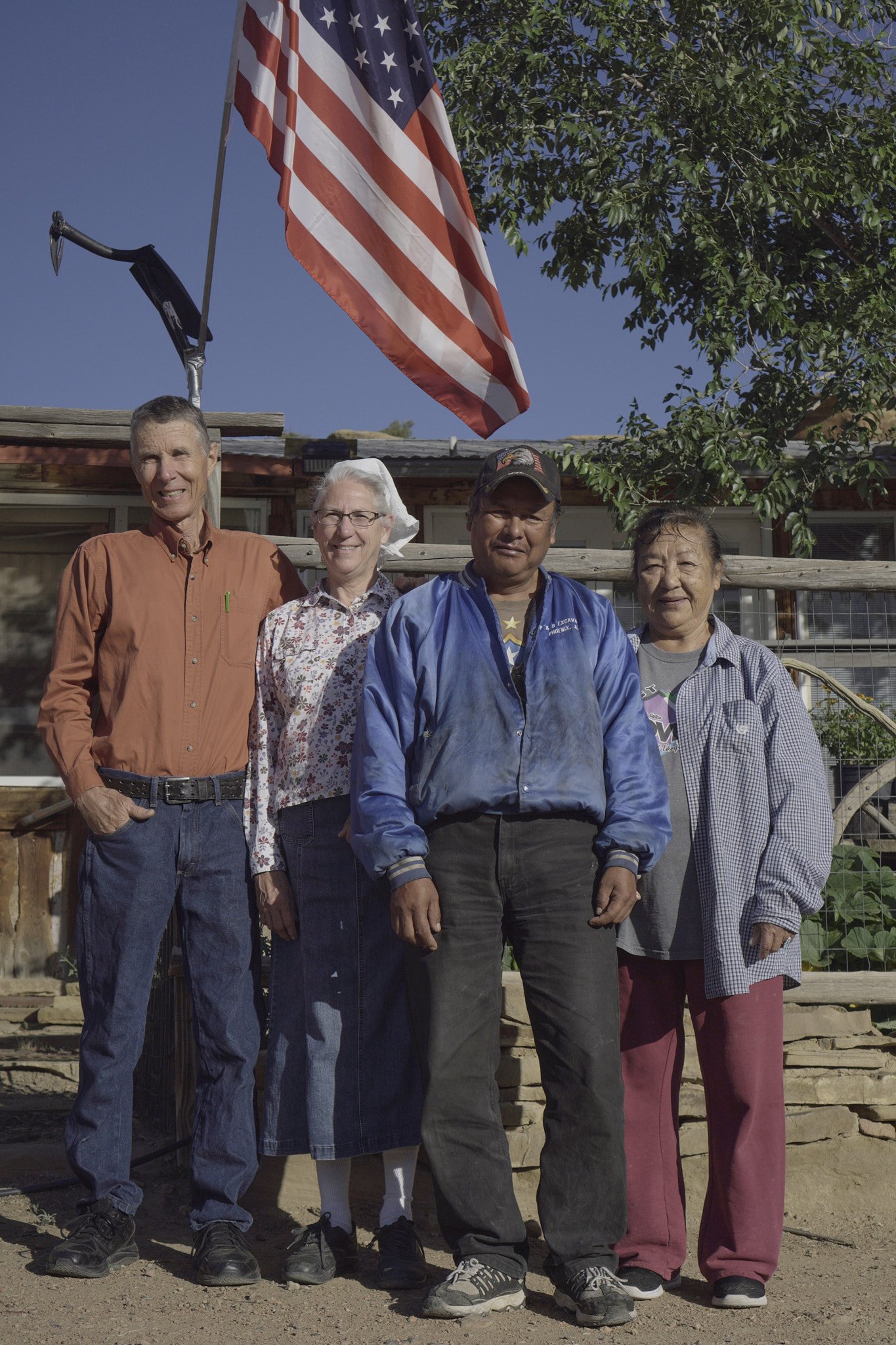Greatly Divided: Riding & Filming Across America
The author poses for a photo on Shoshone land. Photo Credit: Chris Hagen
In September of 2021, my mother and my brother-in-law were the victims of hate crimes. They were racially targeted and assaulted on the subway within two weeks of each other—one in Atlanta and the other in New York City. Both were harassed with racial slurs, one was robbed and the other was physically assaulted.
This happened within weeks of completing a cross-country cycling trip along the Great Divide Mountain Bike Route (GDMBR). The GDMBR is a 2,600+ mile route that extends from the U.S./Canada border near Banff, Alberta down through the heart of America to its terminus along the U.S./Mexico border. The route includes incredible views of Glacier, Yellowstone, and Grand Teton national parks.
I was/am FUCKING FURIOUS.
Riding
Beloved Kimchi on Pueblos Territory. Photo Credit: Young Mazino
“What the **씨발** are the chances?”
We were sitting in a motel owned by an elderly Korean couple who cooked us 김치찌개 (kimchi jigae), a Korean kimchi stew, in Grants, New Mexico. Who would have thought that there would be Koreans living in a small town of 9,000 in the middle of New Mexico? By we, I mean three Korean-American guys–myself, a newly 30-something, my 17-year-old little brother, and my childhood best friend.
Now if you haven’t foregone your culture's cuisine for long periods—I’m talking about flavors that your body yearns for, dishes that rewind time, and scents that shake your soul—returning to those familiar dishes is pure magic. It takes you back, ya know?
Drone shot on Pueblos Territory. Photo courtesy of author.
When I think of my time on the Great Divide, I think of us pedaling through middle America, past small towns and other intrepid two-wheeled folks who looked nothing like us. I’m talking about three Korean Americans on bikes riding through majority-white towns.
I grew up in Rockville, Maryland, where three of its surrounding counties are in the top 10 most diverse small cities in the U.S. I was always exposed to different languages, foods, cultures, and heritages. Being on the trail was the opposite of that. The people I met that summer were overwhelmingly white. I ran into a grand total of two other cyclists of color out on the trail that summer.
It felt strange.
Photo courtesy of author.
Before the journey began, I had many doubts about going on this trip. The COVID pandemic was still ongoing and anti-Asian hate crimes were up by 164% from the previous year. I had some hard decisions to make. I had been planning the trip for six years. And the opportunity to celebrate entering my thirties by biking cross-country with my now 17-year-old brother wouldn’t be around for ever. When I made that promise to myself years ago, I had no idea what the state of the world would be.
Throughout the pandemic, I’ve had my own experiences of anti-Asian racism. I’ve been verbally harassed, told to ‘go back to my country’, physically threatened, been spat upon, and experienced countless microaggressions. These encounters made me hesistant. Even my parents begged me not to go.
Bike on Jicarilla-Apache Land. Photo courtesy of author.
I considered the safety concerns, especially the challenge of taking two new bikepackers on such a long journey but we decided to go anyway. Throughout, I kept thinking of the Korean word 한 (Han). It means something different for each Korean person, but this is how I define it:
한 (Han): “Han is an inherent, undefinable, and complex part of being Korean. It is internalized/unresolved collective grief, resentment, and rage created by deep intergenerational trauma and oppression. Korea’s long history of foreign imperialism/occupation, division, war, and enslavement, manifests Han in the human experience of adversity through creation, expression, and emotion.”
What really stuck with me was the inspiration to create through struggle and/or oppression. One such example in Korean history is the origins of the Korean folk song, 아리랑 (Arirang). These lyrics transcend the North and South Korean divide and resonate within the hearts of all Koreans. Arirang became the official resistance anthem during the Japanese occupation in the early 1900s.
It was cultural genocide. During the occupation, which began in 1910 and lasted until 1945, the Japanese regime destroyed Korean culture, language, and history by trying to assimilate Koreans through “re-education” programs, the erasure of Korean names, and the destruction of historical artifacts. Many Korean men became forced laborers in Japan and Korean women were forced to become “comfort women,” or sexual slaves for the Japanese army. Everything is made even more complicated by the fact that the U.S. endorsed the Japanese occupation of Korea—a fact that’s hard to digest as a “Korean American.”
아리랑 (Arirang) Film Poster
Arirang was also a famous silent film created in 1926 about a young Korean student who becomes mentally ill after being held and tortured by the Japanese. The film was a huge success and was known as Korea’s first nationalist film. It was destroyed during the Korean War and is now considered a “lost film.”
Even during a period of great tribulation, creation was used to inspire and unify.
Portraits of those who helped us along the way. (Photo Credit: Young Mazino)
Looking back, the trip really revealed a lot to us. We experienced the kindness of strangers and we unraveled our misconceptions of rural America. After the trip, the travel highs quickly came crashing down with the anti-Asian hate crimes against my family members. I was reminded of how greatly divided our country is. Escaping for a brief moment doesn’t change this fact.
Regardless, the trip was full of fond memories and important revelations. When you’re cycling for 7+ hours a day you have a lot of time to ponder and a lot to think about. Amidst the endless dirt roads, I thought about metaphors of life and love.
Photo courtesy of author.
One such metaphor was the road itself. When you look at a standard road you see black pavement, white lines on the perimeter, and dashed yellow lines in the middle. Race was always at the forefront of the film and of our safety, so I naturally paired these two together.
I thought of the pavement as Black America, the foundation of civil rights and the wealth of America—built through slavery. The white lines visually represented White America; reminding me of how often they resist or feel left out of conversations about race. It also reminded me of the significant divide between white Americans when it comes to racial issues. The dashed yellow lines represented Asian America; we are in the middle, not quite fitting into America’s racial binary and unsure where we belong in this concept of race.
These thoughts were constantly whirling around my brain as each pedal stroke took me further north. About halfway through the trip we entered Colorado and started passing through very wealthy and very white ski towns. My childhood best friend, Young, had a breakthrough moment while we were riding through Colorado. That was the first time he had personally witnessed wealth on that scale.
Young on Ktunaxa Nation Lands. Photo courtesy of author.
Young thought about how the land had been ‘acquired’ through ethnic cleansing and genocide. He thought about how centuries of generational wealth and land ownership had resulted in ski towns where ordinary people could not afford to live and where the very privileged chose to live for only a few weeks out of each year. Young thought of how Koreans easily could have ended up in similar circumstances to the Indigenous people in America, having our land stolen and our culture destroyed by Japanese imperialism.
We (Koreans) were the lucky ones.
Filming
There are very few outdoor adventure films that highlight a Person of Color, fewer that openly discuss race, and fewer still that are directed by a Person of Color. I find that disheartening. Racial and cultural identity have been a large part of my own experience—here in America. My racial identity doesn’t dissolve once I step outside. Nature magnifies it.
Riding Han was a film I wanted to document long before the COVID pandemic happened. I was unsure of what direction to go in but exploring race, identity and the outdoors was always my intent. At first, I reached out to other BIPOC cyclists who were riding the Divide that summer to have an interview with them. But as the journey unfolded, the focus of the film shifted to our (Korean American) experience because that’s all we know and can understand.
A retired Korean man, biking the Great Divide on Shoshone Land. Photo Credit: Young Mazino
It’s wild to look back and think of all of the moments we had that were connected to our Korean culture. We were fed Korean food by strangers; we encountered a 65-year-old retired Korean man in rural Montana who was also riding the Great Divide; I reconnected with a Korean American acquaintance from college who was living in Montana. He and I grew up in the same area, childhood religious background, and have each found a calling in the outdoor guiding industry. It felt like our lives were destined to intertwine at that very specific moment in time, or as the Koreans say, 인연 (inyeon), the ties between two people over the course of their lives.
It’s hard to believe that some moments weren’t meant to happen. I feel fortunate to be able to share some of them through my film, especially with everything that’s going on in the world right now. The increase in anti-Asian violence during the pandemic and the Atlanta/Amazon shootings were very disheartening but the Han and anger I felt pushed me to complete my film. Riding Han blossomed into something more than I anticipated. I also felt more pressure to make sure this film makes the Asian American community proud.
Everything was especially shaken up after Mom and Sam were attacked weeks after our Great Divide trip. I’ve experienced racism all of my life but it hits different when it happens to your family members. Just imagining my mother alone while being yelled at by a racist stranger, harassed, and told to go back to her country, left me in deep anguish. Nobody wants their mother to experience that. I felt alone, enraged, and totally useless on the other side of the continent. After hearing the news I took off on my bicycle and pedaled aimlessly, hoping the desert could bring me answers.
There were other emotional setbacks like unexpectedly losing post-production funding and being ghosted by a cycling company after months of communication with false promises.
Maybe the Great Divide was just one big reveal, that everything and nothing has changed.
107° Group selfie on Tohono O’odham lands. Photo courtesy of author.
Riding Han is set to be released in the summer of 2022.
Riding Han info: https://www.pakeugene.com/films
Follow me @bikepak on Instagram

